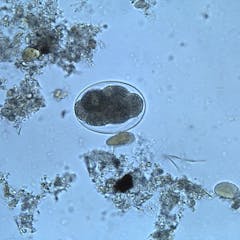
Articles on Diseases
Displaying 1 - 20 of 29 articles

Getting vaccinated is the best way to protect against diphtheria.

New research on what attracts blood-feasting flies to blue objects could help minimise the impacts of those insects on people and animals.

Though many Americans believe that parasitic infections exist in poorer countries, research shows that the problem exists in the US and has a higher impact in communities of color.

The inequitable distribution of the benefits and harms of the food system is a violation of the constitutional right to food.

While Nigeria has made progress in controlling some neglected tropical diseases, it should do more as it carries a heavy burden of these diseases.

The lack of a clear formula to distinguish between donors’ adaptation and mitigation funds is hurting Africa’s climate response.

Financial support for science and research in Nigeria remains pathetic. This has led to the deterioration in the quantity and quality of trained virologists at universities.

The chances of surviving Marburg are improved if there’s early supportive care with rehydration and symptomatic treatment.

Two years ago, the Recovery trial transformed COVID treatments around the world with a landmark finding that may have saved a million lives in just nine months

A bat’s body is really good at tolerating diseases.

Lockdowns to curb the spread of COVID-19 had various effects on food as it went from farms to plates.

Nearly half the states have reduced liability for health care providers at a time when nursing home regulation is declining and families can’t visit loved ones for fear of spreading the coronavirus.

When two or more epidemics co-exist and compound one another to worsen health, they are said to be syndemic. COVID-19 is feeding on other crises and diseases.

Human psychology has evolved to avoid situations that could lead to infection. Behavioral choices now could have long-term effects on how people interact with others and the world.

Why is there such a wide difference in projections for how much COVID-19 will spread? An expert in disease modeling explains what models can and cannot do.

A rare disease is one that affects less that five in 10,000 people. There are about 7,000 known rare diseases.

The current outbreak of COVID-19 underscores the need to study urban growth to understand the spread and control of future epidemics.

Chocolate plants can absorb cadmium through their roots and store it in chocolate leaves and seeds. Cadmium levels in processed chocolate depending on the production process and the producers.

Smallpox is the only disease to be eradicated through sustained human effort. Many of these volunteers were women who defied social norms to save lives in India.

CC BY-NC-ND6.58 MB (download)
It's increasingly difficult to manage diseases in inner cities.

